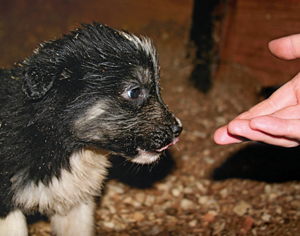Scale of capital’s stray dog problem unknown
 Following the savage death of a
Japanese businessman by a stray dog
in Bucharest’s most exclusive retail avenue,
city authorities are making steps
to solve the problem of strays in the capital,
but the scale of the problem remains
unknown.
Following the savage death of a
Japanese businessman by a stray dog
in Bucharest’s most exclusive retail avenue,
city authorities are making steps
to solve the problem of strays in the capital,
but the scale of the problem remains
unknown.
Hajime Hori, the 68-year-old former
head of a local unit of a ball-bearing
manufacturer, was attacked by a dog
last month outside his apartment on
Calea Victoriei, near the seat of the
Government.
Bucharest deputy mayor Razvan
Murgeanu promised to take “radical
measures” after the event.
The City Hall dog catchers rounded up
around 40 canine suspects from the area.
Many were claimed by their owners and
the Police have narrowed their investigations
down to one prime suspect. DNA
tests and dental research are now ongoing
to determine the dog’s guilt.
But radical measures to combat the
problem which is a huge public relations
disaster for the country, as well as
a danger to public health, have not yet
happened.
The number of dog catchers in
Bucharest is 16, divided into six crews.
The city authorities want to employ only
20 more dog-catchers.
Dr Magda Popescu, PR Director
of Autoritatea pentru
Supravegherea Animalelor
(The Authority for Animals
Supervision – ASA) says for
the latest dog-catcher interviews
only 15 came for 20
vacancies.
The wild dogs originated in
the 1980s, when Ceausescu
tore down sections of the
city for building projects, prompting
dog owners to put their pets on the
street. Then the dogs bred and kept on
breeding.
Now there is no official figure for the
number of strays in Bucharest.
“There are many numbers mentioned,”
says Veronica Tulpan, project coordinator
of the animal protection foundation
Vier Pfoten. “But the difference between
them is huge.”
Dr Popescu says there are around
200,000. But this figure is gathered from
the media.
In 2004, Vier Pfoten estimated there
were 40,000 dogs in Bucharest. As a
comparison, the Bulgarian authorities,
as cited by the foundation, claim Sofia
has 60,000 strays.
When it catches a stray dog, ASA
impounds the dogs in a shelter for two
weeks. During this time the dog has
three options: to be adopted, claimed or
killed. 40 per cent are claimed and adopted,
while 60 per cent are put down.
The ASA is trying to change the legislation
to reduce the accommodation
period to three days.
To kill a dog by lethal injection costs
1.5 Euro while to castrate one prior to
adoption costs 30 Euro. All dogs adopted
or claimed are marked on their skin
with ASA’s sign.
“If we see on the street a dog marked
this way, we don’t catch it again,”
Popescu says. Today ASA’s shelter houses
around 1,000 dogs.
Meanwhile Vier Pfoten, financed by
donations from western Europe, has its
own project.
The foundation catches dogs, sterilises
them and returns them to the street.
It averages 40 dogs per day and the sterilisation
cost for one dog is ten Euro.
Ana-Maria Smadeanu
